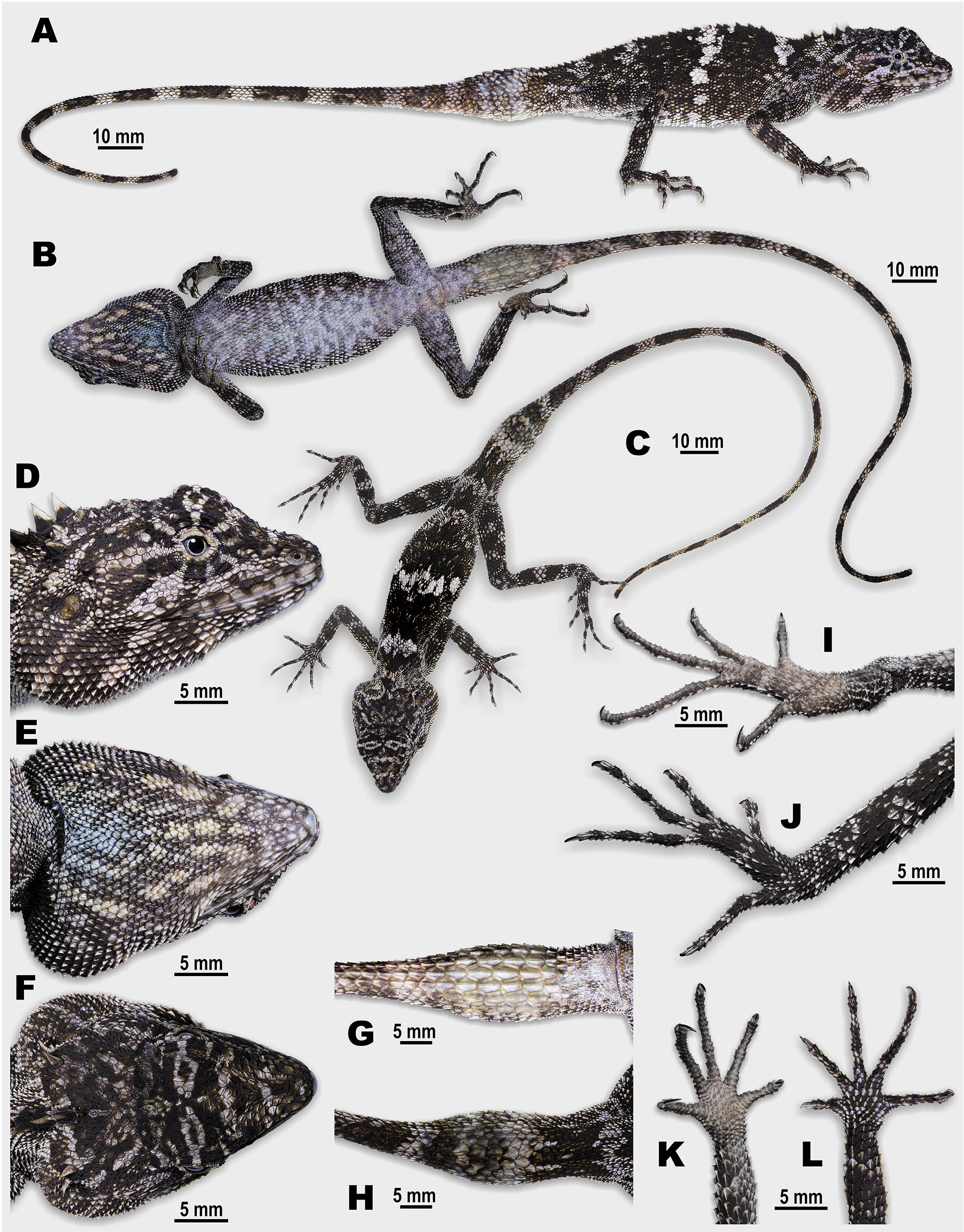× near
Holotype Laodracon carsticola Gen. et sp. nov. (NUOL R.2022.01), adult male, in life A: General lateral view; B: General ventral view; C: General dorsal view; D: Head on side; E: Head in ventral aspect; F: Head in dorsal direction; G: tail base in ventral aspect; H: base of tail from dorsal side; I: Eye aspect of right leg; J: Opisthenar aspect of left leg; K: Volar side of left hand; L: Opisthenar side of right hand. Scale bar equals 10 mm for AC and 5 mm for DL. Photos by Nathanal Maury. Credit: Zoological research (2023). DOI: 10.24272/j.issn.2095-8137.2023.062
An international team of biologists, animal management specialists, geneticists and forestry managers has discovered a new species of ‘dragon lizard’ with impressive camouflage capabilities in Laosone. In an article they published in a magazine Zoological researchthe group describes how the lizards were found and what they learned from the two specimens they caught.
“Dragon lizards” have been known in some parts of Laos for many years, they belong to the family Agamidae and, as their name suggests, bear some resemblance to fictional dragons. The new species was found living on limestone peaks known as karst landscape in Khammouan Province.
The first one was spotted late last year by a photographer from the National University of Laos who was looking for exotic birds. A guide accompanying tourists there for zipline rides spotted a second one climbing the rocks shortly after. A second lizard was eventually captured when a team of researchers visited the site. Both have been extensively researched.
Lizards have impressive camouflage capabilities, with their black and gray scale patterns matching the rocks they climb. Unless they are moving, they are almost impossible to detect, researchers note. Both specimens were about 15 centimeters long. They had blue/grey eyes, some red and blue spots, and rough skin, which is useful for a creature that climbs rough rock.
× near
Laodracon carsticola Gen. et sp natural habitat. nov Nam Sanam-Phou Pha Marn PPA., Khounkham Dist., Khammouan Province, central Laos A: Macrohabitat of a new species on karst peaks. B: Laodracon carsticola Gen. example of et sp. November in situ (not collected) shows the destructive camouflage that conceals the lizard while perching on limestone. Photos by Santi Khayyasith. Credit: Zoological research (2023). DOI: 10.24272/j.issn.2095-8137.2023.062
They also had unique swollen tail bases. Genetic tests revealed that the lizards are an entirely new genus belonging to the subfamily Agamidae. The team named it Laodracon carsticola and proposed the common name Khammouan karst dragon. A preliminary study of lizards suggests that they survive on ants.
Karst habitats are typically home to caves and hills due to groundwater melting the rock, creating homes for a wide variety of organisms, such habitats are known for their rich diversity.
The researchers also spoke to local residents in the area, who said the lizard was rare.
Details:
Saly Sitthivong et al., Hiding in jagged karst peaks: a new microendemic genus and species of limestone-dwelling agamid lizard (Squamata: Agamidae: Draconinae) from Khammouan Province, Laos, Zoological research (2023). DOI: 10.24272/j.issn.2095-8137.2023.062
#species #dragon #lizard #impressive #camouflage #capabilities #Southeast #Asia
Image Source : phys.org

